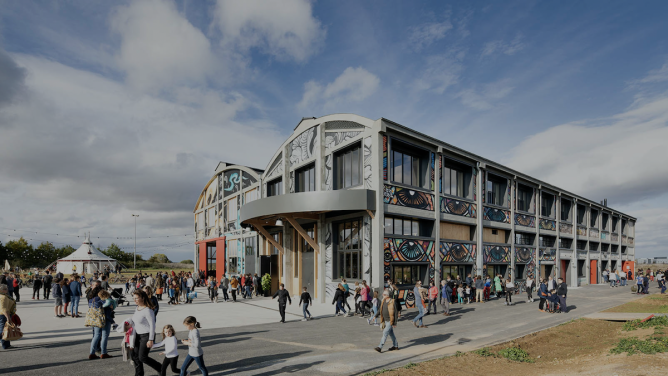In France, urban sprawl is the main cause of the artificialization of 30,000 hectares of land each year. If this current trend continues, the equivalent of one French department every 20 years will be built up. How did we get here?
Urban sprawl and standardization
During an interview with Mathieu Lerondeau, Director of Communications and Communities at Leonard, Sylvain Grisot explained how the manufacture of the city has become more “industrialized” today. Urban sprawl feeds on the standardization of new pavilions, offices, and shopping centers, on the outskirts of cities…
“In the end, we are dealing with something simple. We are standardize housings and construction… We can also industrialize the production process, although to make standard housings, standard land is needed. And what’s better than agricultural land? It is simple and uneventful, which means that it has no construction liabilities (asbestos, soil pollution). More so, it is a land with no neighbors”.
However, this approach comes up against current limits and challenges: climate, biodiversity, food, short circuits… The circular urbanism model, proposed by Sylvain Grisot is based on the fact that the raw material of which cities are made, soil, is a finite resource. Today, we are suffering from the direct and indirect effects of “the sum of 3 crises”, such as described by Sylvain Grisot: the resource crisis, the ecosystem crisis, and the climate crisis.
Circular urbanism
With the concept of “circular urbanism”, developed by Sylvain Grisot, it is suggested that we transpose the logic of the circular economy, on three levers or cycles, alternative to urban sprawl:
- The first lever is based on intensifying uses and avoiding building by occupying vacant housing for example, or optimizing the functioning of public housing…
- The second lever concerns the construction and demolition cycle: what we build today, must be able to change uses tomorrow. We’re talking about the creation of what we would call “malleable cities”.
- The third lever concerns both, densification and recycling. It’s a matter of “returning to the soil”, which could mean building houses next to existing houses, or recycling industrial wasteland…
Today, the approach of an orchestrated construction of “the city on the city” would be even more expensive, than urban sprawl. Changing our approaches requires a new “intellectual plasticity”:
“It’s the specific and technical skills, concerning the questions of ‘ecology in the urban environment’, as well as the skills of the actors who know how to handle being in the middle of systems that are important. (…) We will have to rely on intelligence. Designing a building for rehabilitation, rather than for the classical ‘construction-deconstruction’ operation, requires more intelligent engineering, and more design work. Today, engineering, just like architecture, is paid by the amount of work done, whereas, given the direction of history and the challenges of the century, we will have to invest more in intelligence, for us to be able to do less work tomorrow.”


